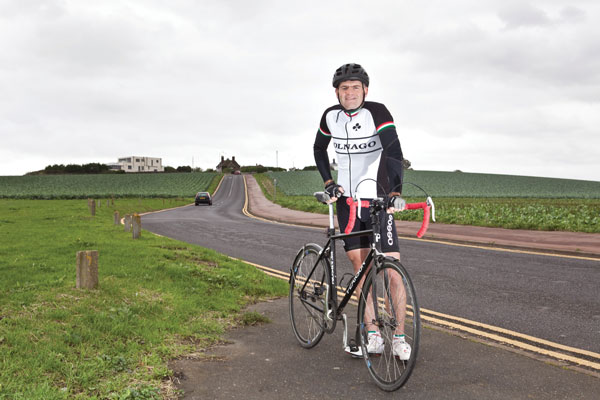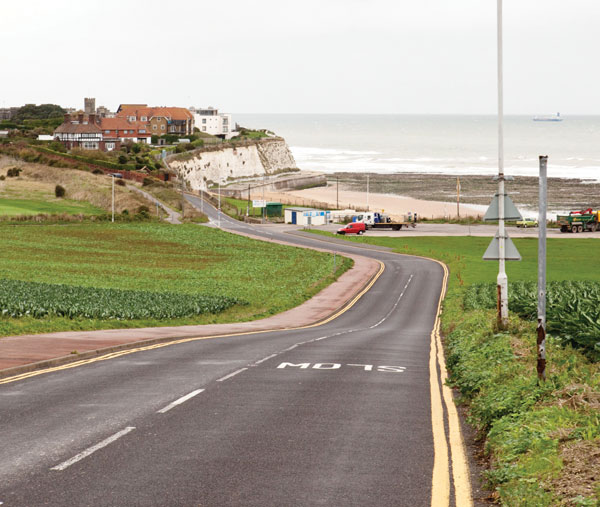Strava king's meticulous monotony

Earlier this year Melvin Webb's imagination was captured by a Strava/Specialized challenge to ride 105,000 vertical feet in just 47 days.
However there was one towering problem: Melvin lives in Broadstairs, East Kent, not an area known for it's Alpine-style passes. So what was the answer? Ride the same pair of adjoining slopes - combined height no more than 80 feet - 1,200 times.
"It half drove me round the bend!" Mr Webb laughed when CW spoke to him. "It was all born out of a cycling trip I did to Belgium with a friend. As we slogged up one hill I said: right, that's it, I'm going to do the Strava challenge.
"But when I got home I started thinking, where am I going to find the hills? To cycle to any decent hills, do some repetitions and then cycle back again would have meant an enormous amount of mileage. So I settled on the closest climbs to me - a little dip with a hill at either end at Joss Bay. The whole thing can only be about 200m long.

Crazy climber Melvin Webb
"I couldn't say exactly how many times I did it, but each lap gives something like 79ft of altitude gain. I would spend my Saturdays basically going up and down those two hills, so I guess I did them at least 1,200 times."
What does repeatedly cycling the same stretch of road do to you? Mr Webb explained: "I broke it down to about five-mile stints and then stopped to have a gel or a drink just to keep sane. There's a strange monotony to it that almost hypnotises you. The time drifts by and you see the same people and they look at you as if you're completely barking mad.
The latest race content, interviews, features, reviews and expert buying guides, direct to your inbox!

Melvin in front of his modest climb
"The worst day was when I did it 125 times, over five hours from mid-morning to about mid-afternoon. That day taught me that I needed to take it in slightly smaller chunks because I ended up where I couldn't visually focus on anything other than my front wheel.
"I looked around at one point and I couldn't focus on anything. The only thing that I could see clearly was the piece of the road that rolled right underneath my front tyre. So I just had to stop and sit down. I was fine again after five minutes but I felt I had probably had enough for the day!"
Mr Webb said he did half his rides at night.
"There were all sorts of weird and wonderful comments from people. I had a police car drive past me and they shouted out: ‘Haven't you got anything better to be doing with your time?'
Still, Mr Webb achieved the goal of climbing 105,000 well within the 47-day deadline, and for his efforts he received a 500ml commemorative water bottle. "I don't use it, I've left it there as my trophy," he laughs.

Webb's Col du Galibier
But there have been slightly more impressive benefits too.
"It's actually made me a much, much better hill-climber," Mr Webb said. "I rode that circuit so many times it allowed me to find my limits a bit more.
"I went to ride the Stelvio Pass in July and I thought I was at my limit when I saw the 9km to go sign. But mental energy gets you over that - I could think back and say to myself, hold on a minute, you've ridden up and down hills for a whole day, so you can get over this.
"Now I've got the book Europe's 50 Greatest Cycle Climbs and I'm going to start ticking them off next year. I might even do another Strava challenge too."
This article was first published in the November 8 issue of Cycling Weekly. You can also read our magazines on Zinio and download from the Apple store.
Founded in 1891, Cycling Weekly and its team of expert journalists brings cyclists in-depth reviews, extensive coverage of both professional and domestic racing, as well as fitness advice and 'brew a cuppa and put your feet up' features. Cycling Weekly serves its audience across a range of platforms, from good old-fashioned print to online journalism, and video.